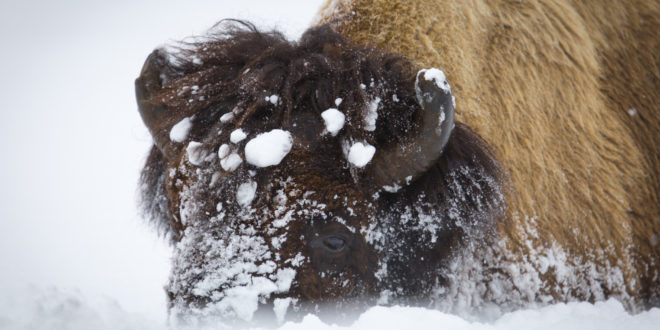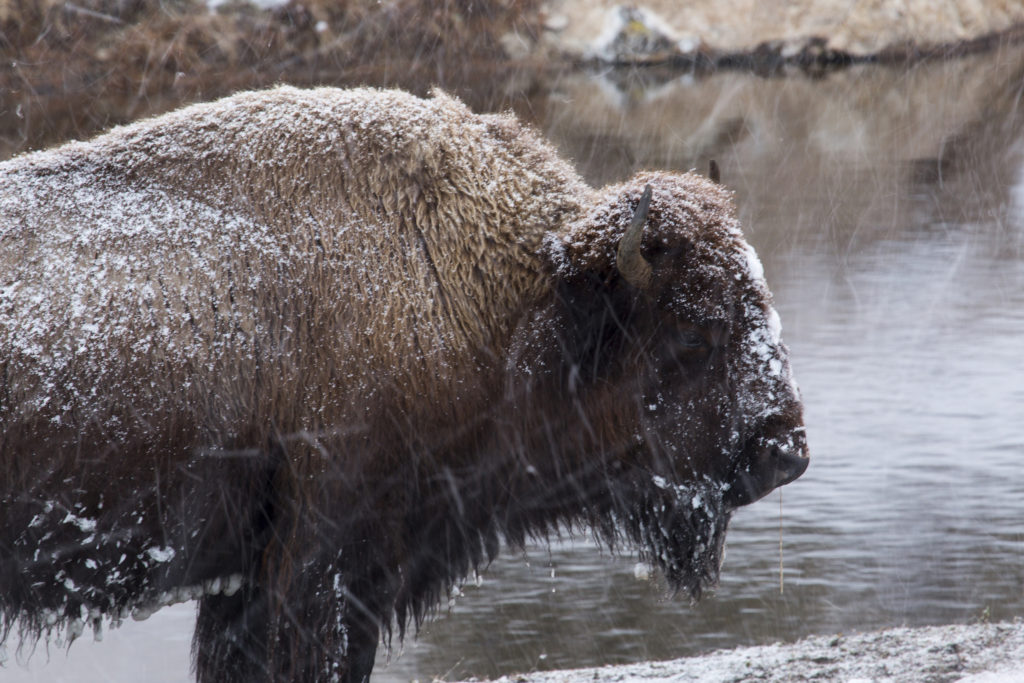With the summer season arriving, bison managers under the Interagency Bison Management Plan are still stuck in a kind of stalemate.
We previously reported that the various state, federal and tribal entities who work together under the IBMP had hoped to have a revised plan by the end of 2017.
So far, agencies and tribes have been stalled in deliberation over management practices and contention over the topic of brucellosis. According to the Bozeman Daily Chronicle, some agencies have floated the idea of forming small groups between IBMP meetings to discuss ideas more frequently. Currently, bison managers meet about three times a year. From the Chronicle:
Different agencies had different ideas for what to spend more time on, but one of the most prominent issues was the lack of bison distribution across a landscape outside Yellowstone National Park. It’s something some government officials and wildlife advocates extoll but also an issue they feel has been especially stagnant.
“We want more dispersal of bison on the landscape, but we’re not doing anything proactive,” said Leander Watson, a biologist for the Shoshone Bannock Tribes.
Bison are limited in how far they can go by a 17-year-old management plan that calls for significant population reductions and state directives that line out where they’re allowed. Both are linked to preventing the spread of brucellosis, a disease that can cause animals to miscarry.
The livestock industry fears the spread of the disease from bison to cattle because the disease’s presence in a new place could create market instability for beef producers. More than half of Yellowstone’s bison are believed to have been exposed to the disease, which is passed via afterbirth. While elk have transmitted the disease, there has never been a documented case of bison transmitting the disease to cattle in the wild.
Still, some argue that having fewer bison and limiting their movements is the only way to keep it from happening. Prior to this year’s hunt and ship-to-slaughter operations, officials said there were roughly 5,500 bison in the population. More than 1,200 were killed this winter.
Another issue, according to Yellowstone biologist PJ White, is that bison are not leaving the Park as expected. We previously reported Montana Governor Steve Bullock had directed the state to let bison roam year-round in parts of south and southwestern Montana. Previously, most bison were hazed back into the Park. From the Chronicle:
White pointed to the upper Gallatin area south of Big Sky, where bison are now allowed but haven’t gone. Some have wondered whether bison need to be trucked there, but no proposal to do so has come forward. At the meeting, some also talked about how the trap and hunting pressure prevents bison from migrating farther on the north side.
Hunt safety and social sustainability is another issue some bison managers said they’d like to improve on, particularly in an area north of the park known as Beattie Gulch. Each winter, hunters line up there and wait for bison to wander across the park boundary.
Worries about safety, predator-attracting gut piles and having too many hunters in a small area have come up in the past. Government officials have tried to abate the problems, but a few landowners said Thursday that those efforts have fallen short.
Sue Oliver, who lives near Beattie Gulch, said hunting activity forced her to leave her home this winter. She said cars have blocked her driveway and that hunters’ high-powered rifles are a danger to the people who live there.
“All it takes is one person shooting at a fleeing bison,” she said. “I could be shot in my own living room.”
Tensions over the increasing outdatedness of the Interagency Bison Management Plan were evident in an exchange earlier this year between the Montana Department of Livestock, Governor Bullock, and the Fort Peck tribes.
To wit: Governor Bullock put a temporary hold on operations at Stephens Creek after learning 40 bison promised to the Fort Peck Indian Reservation were slated for slaughter. The tribes had hoped to house the bison in a specially built quarantine facility, with the intention of creating a herd of brucellosis-free Yellowstone bison. The Department of Livestock responded negatively, citing state law prohibiting the transport of animals that test positive for brucellosis. After some negotiation, 24 bison (all bulls) will be held in USDA corrals outside Corwin Springs before heading to Fort Peck.
In the Montana Legislature, meanwhile, one legislator introduced a bill that sought to strike the brucellosis prohibition, which would allow bison to be shipped around the state. The House Agriculture Committee tabled it.
 Yellowstone Insider Your Complete Guide to America's First National Park
Yellowstone Insider Your Complete Guide to America's First National Park







You must be logged in to post a comment.